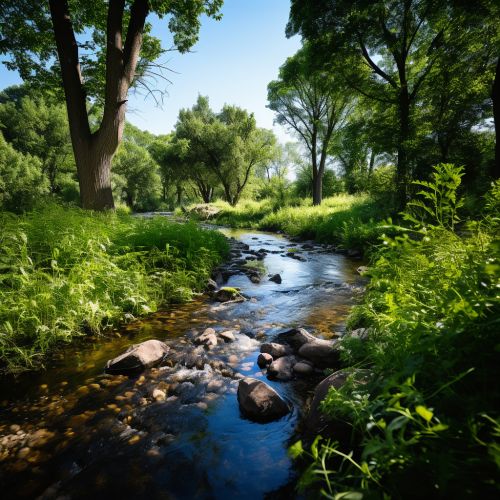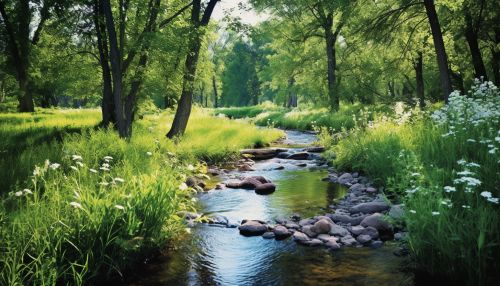The Ecology of Riparian Zones and Streamside Forests
Introduction
Riparian zones and streamside forests are unique ecosystems that exist along the banks of rivers, streams, and other water bodies. These areas are characterized by their high biodiversity, complex food webs, and significant role in nutrient cycling. The ecology of riparian zones and streamside forests is a multidisciplinary field that encompasses aspects of hydrology, soil science, botany, zoology, and environmental science.


Physical Characteristics
Riparian zones and streamside forests are typically narrow strips of land that run along the edges of water bodies. They are often characterized by a high water table and frequent flooding, which results in unique soil characteristics and a distinct plant community. The physical characteristics of these areas are largely determined by the geomorphology of the surrounding landscape and the hydrological regime of the associated water body.
Biological Characteristics
The biological characteristics of riparian zones and streamside forests are shaped by the interaction of water, soil, and organisms. These areas are typically rich in biodiversity, hosting a wide variety of plant and animal species. The plant community in these areas is often dominated by water-loving species, such as willows, alders, and cottonwoods. The animal community is equally diverse, with a range of species from aquatic invertebrates to large mammals using these areas for habitat, food, and shelter.
Ecological Functions
Riparian zones and streamside forests play a crucial role in maintaining ecological balance in both terrestrial and aquatic ecosystems. They serve as buffers, filtering out pollutants from runoff before they reach the water body. They also help to stabilize stream banks, preventing erosion and sedimentation. In addition, these areas provide important habitat for a wide range of species and serve as corridors for wildlife movement.
Threats and Conservation
Despite their ecological importance, riparian zones and streamside forests are among the most threatened ecosystems worldwide. They are often degraded by human activities such as agriculture, urban development, and logging. Conservation of these areas is crucial for maintaining biodiversity, water quality, and overall ecosystem health. Various strategies can be employed for the conservation of these areas, including land use planning, restoration, and legal protection.
